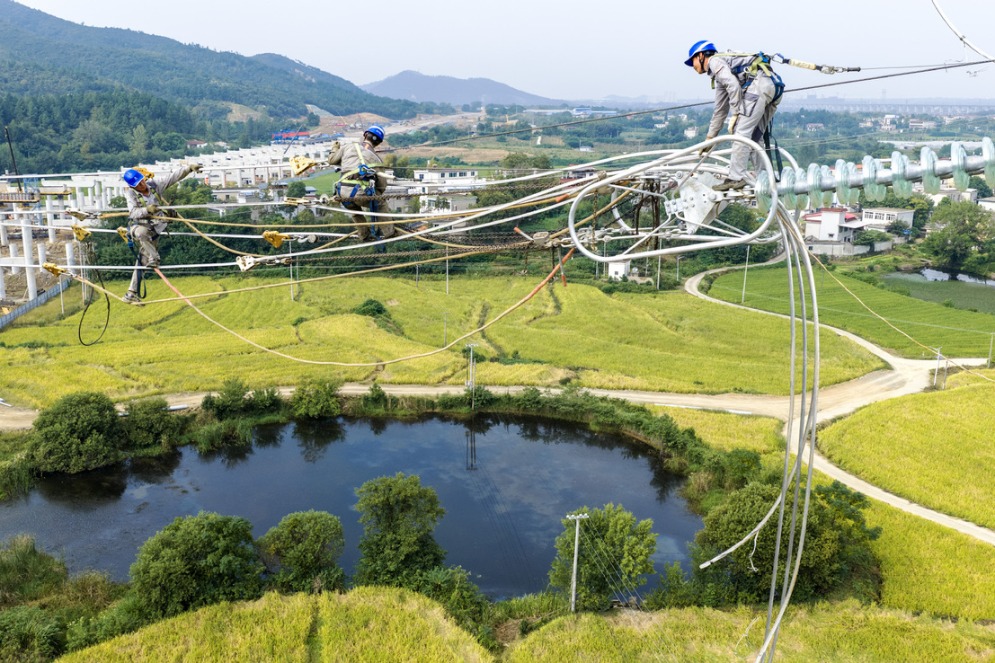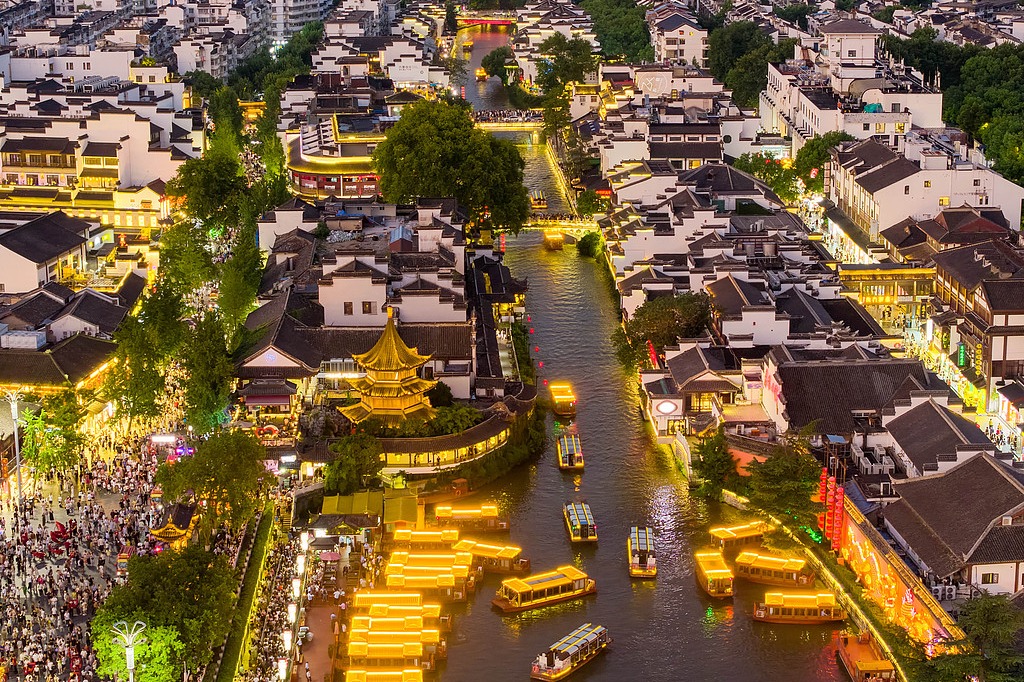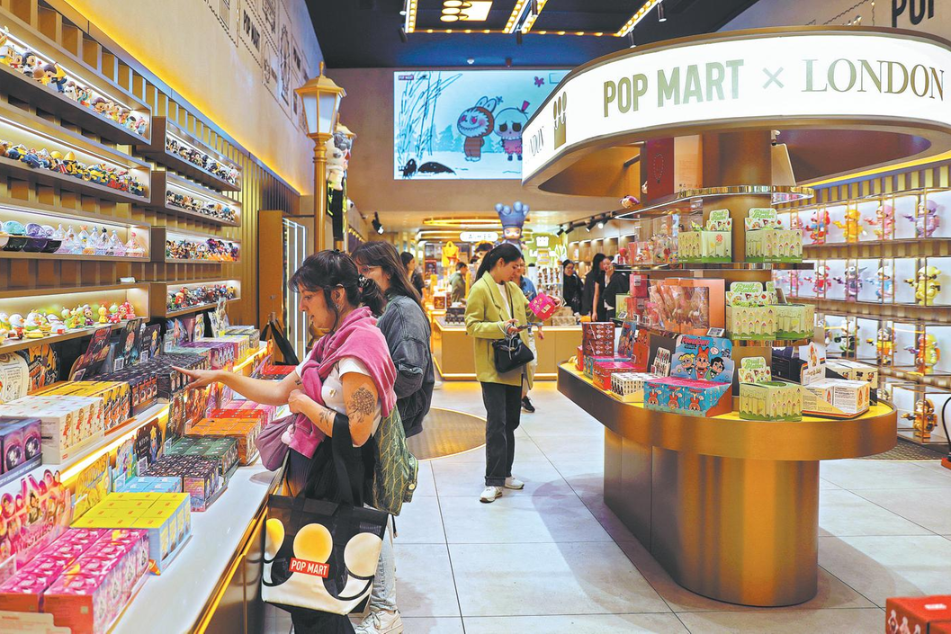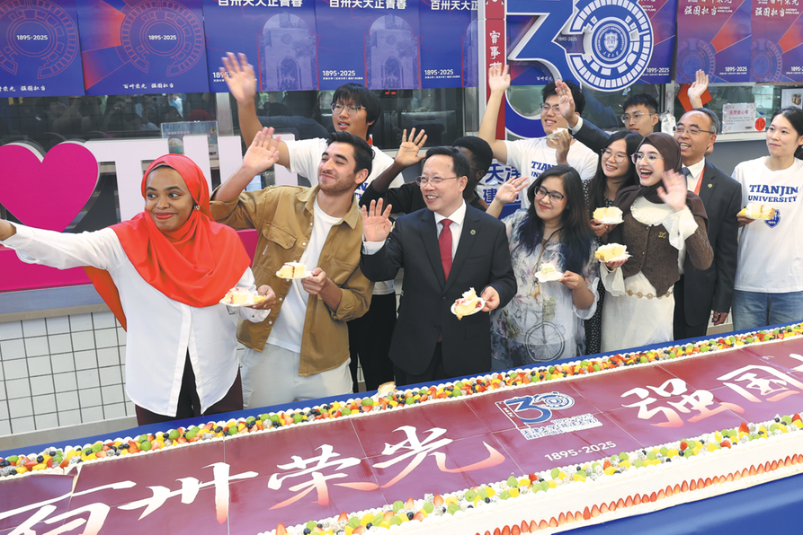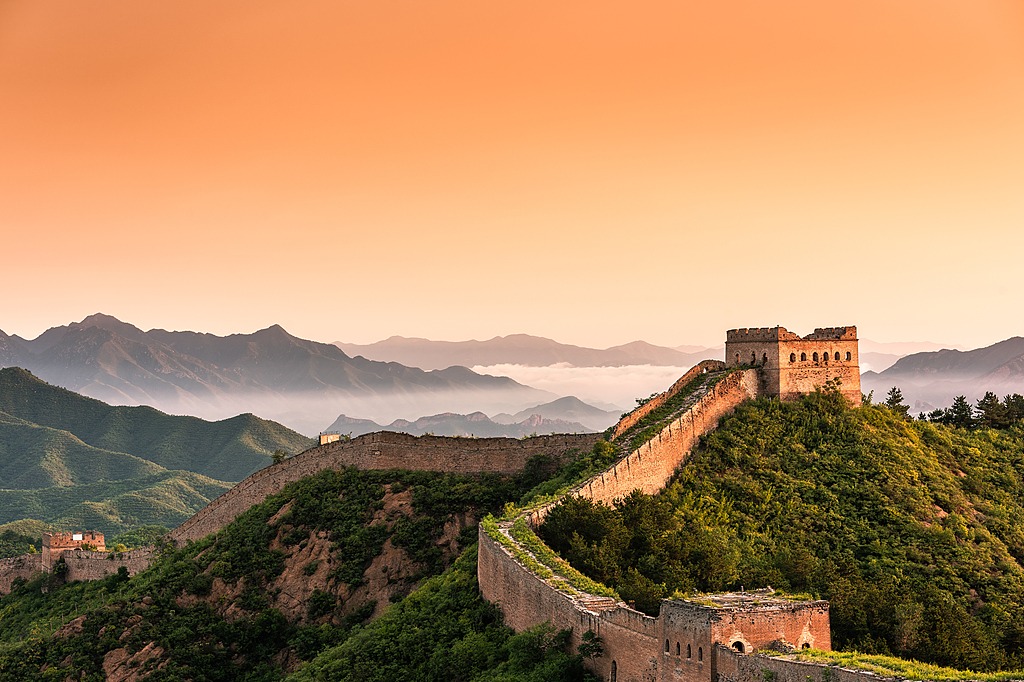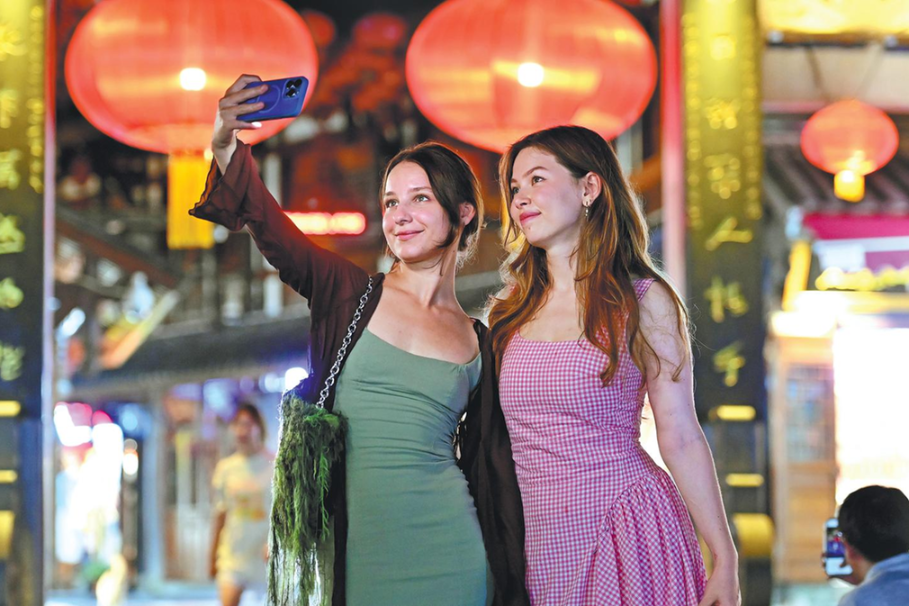Farmers' paintings capture rural vibrant life in vivid details

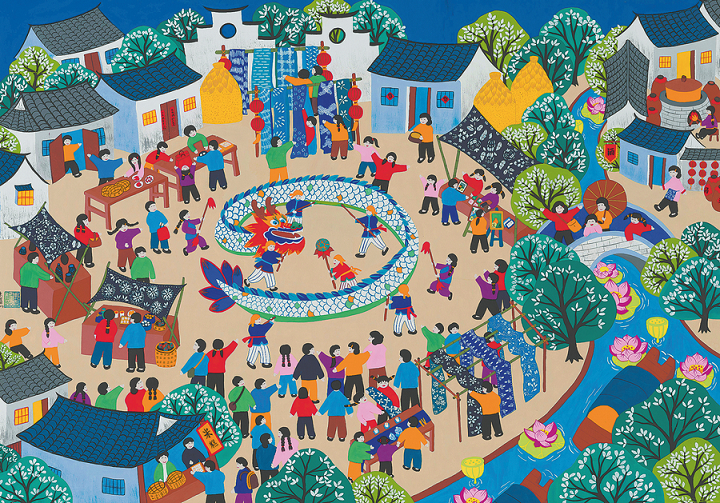
In Zhuang villages, residents gathered in courtyards chatting leisurely; during Tibetan New Year celebrations, people in colorful costumes weaving through the lively crowds; in houses, chickens pecking insects and grains from the ground, cats and dogs lying by doorsteps, and golden corn and fresh fruits and vegetables drying on rooftops. These charming scenes — complete with every detail, brimming with the warm, vivid breath of life — are on display at the ongoing farmers' painting exhibition at Jinshan Museum in Shanghai.
The 2025 national excellent farmers' painting exhibition opened at Jinshan Museum on Sept 16, offering a fresh, intimate take on Chinese folk art that centers on the richness of rural life.
Aimed at "showcasing the vitality of rural culture in the new era and promoting the innovative development of farmers' paintings", the exhibition stands out for two key reasons: its thematic framework rooted in nature, and its celebration of regional artistic diversity. Structured into three sections — highquality exhibitions, subdistrict and town tours, and public education programs — the exhibition aims to bring the treasure of folk art closer to residents and visitors, linking rural traditions with urban life.
This summer, Jinshan district successfully hosted the first China rural painting exhibition at the China Art Museum in Shanghai, displaying 544 works and attracting about 546,000 visitors. As a continuation and enhancement of that event, the ongoing exhibition has selected 84 outstanding modern folk paintings from townships across China after strict evaluation by experts.
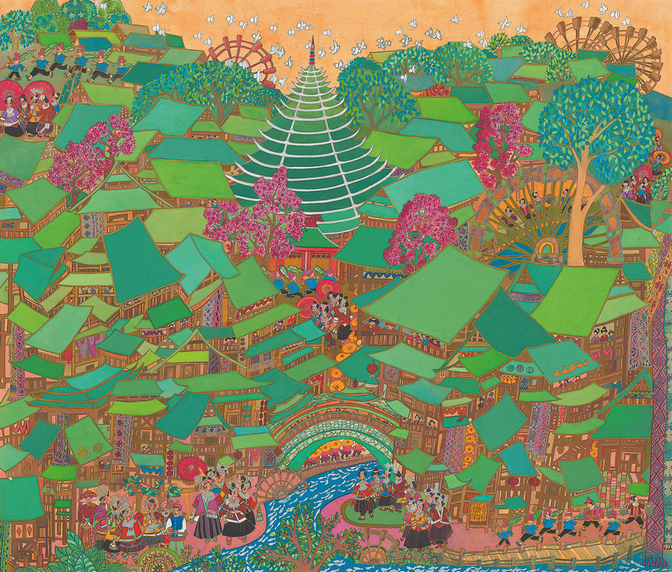
On-site, standout works from across China showcase striking regional charm. Spring Village from the Guangxi Zhuang autonomous region uses delicate brushstrokes to depict the scenery of Zhuang villages, with residents leisurely chatting in courtyards. Sichuan province's Joyful Tibetan New Year captures the lively scenes of traditional festivities in vibrant colors, showing people in colorful attire dancing to music, the scene enhanced by ethnic charm.
Even among the selected paintings, Jinshan farmers' paintings stand out. The rural painters use simple strokes to portray everyday life. For example, while Zhang Xinying's Tranquil Farmhouse uses bright tones to recreate daily life in rural areas of eastern China, Zhu Yongjin's Returning with a Full Load focuses on fishermen, with silver-scaled fish and abundant seafood filling the fish hold, conveying the joy of a bountiful catch to viewers.
The paintings of the rural residents of Jinshan district are known for their artistic exaggeration and intensely contrasting colors, which capture the essence of the customs and landscapes of the southern Yangtze River Delta region.
Other works from the Yangtze River Delta region use delicate, detailed brushwork to depict life in a water town — farmers planting rice beside stone bridges, fishermen returning with their catch at sunset — while paintings from northwest villages are usually explosions of bold, vivid colors that reflect the region's vibrant folk customs.
"You see my work Intangible Cultural Heritage Market — steaming rice cake stalls, colorful tie-dyed fabrics, and simple-patterned black pottery. The market stalls appear in a row, full of energy," Zhu Xi, a young Jinshan farmer artist, said. "I painted these scenes to enable people to see how intangible cultural heritage integrates into life, so more people can remember this vitality and inheritance."
The exhibition will travel beyond the museum walls. Organizers will select featured works — including the classic Jinshan farmers' paintings — and hold touring exhibitions across Jinshan's subdistricts, towns, cultural and tourism spots, and business districts from this month to Dec 17, ensuring the charm of rural folk art moves beyond exhibition halls into daily life and allowing more people to experience its uniqueness.














